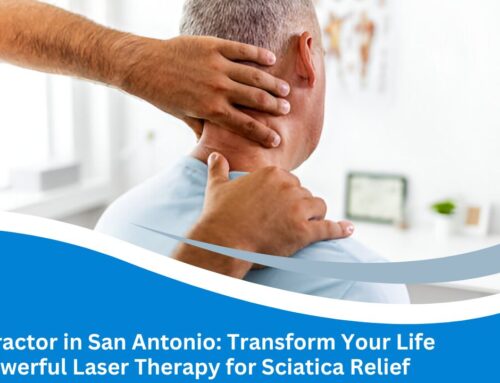Shock therapy for pain relief refers to a medical procedure aimed at alleviating pain by administering controlled electric shocks to targeted areas of the body. The history and development of shock treatment for pain management trace back to ancient civilizations, where electric fish were used to treat ailments. However, it wasn’t until the modern era that shock therapy for pain relief techniques became refined and standardized for medical use. With advancements in technology and understanding of pain mechanisms, therapy has evolved into various forms, including transcutaneous electrical nerve stimulation (TENS), spinal cord stimulation (SCS), and peripheral nerve stimulation (PNS). These techniques have shown promise in providing relief for both chronic and acute pain conditions, offering patients alternative options to traditional pain management strategies.
Understanding Shock Therapy For Pain Relief

Future Directions
Understanding pain involves recognizing its diverse manifestations and the intricate mechanisms underlying its perception. Pain can be categorized into various types, including nociceptive pain, which arises from actual or potential tissue damage; neuropathic pain, originating from dysfunction or damage to the nervous system; and psychogenic pain, stemming from psychological factors. Mechanisms of pain perception involve a complex interplay of sensory, neural, and psychological processes.
Nociceptive pain involves the activation of specialized nerve fibers, which transmit signals to the brain to signify tissue damage. Neuropathic pain, on the other hand, arises from aberrant signaling within the nervous system and is often characterized by burning, shooting, or tingling sensations. Emotional and cognitive factors can contribute to psychogenic pain, which can appear without any physical cause. Understanding these mechanisms is crucial for developing targeted interventions, including shock therapy, to effectively manage different types of pain.

Principles Of Shock Therapy For Pain Relief
The principles of shock therapy revolve around its mechanisms for alleviating pain and the various techniques employed for this purpose. Shock therapy works by modulating the transmission of pain signals within the nervous system. One of the primary mechanisms involves the stimulation of nerve fibers through electrical impulses, which can interfere with or override pain signals traveling to the brain. This stimulation can also trigger the release of endorphins and other neurotransmitters that act as natural pain relievers, further diminishing the perception of pain.
Additionally, therapy techniques encompass a range of approaches tailored to target specific areas or pathways involved in pain perception. These methods include spinal cord stimulation (SCS), which involves implanting electrodes close to the spinal cord; peripheral nerve stimulation (PNS), which targets nerves outside the spinal cord; and transcutaneous electrical nerve stimulation (TENS), which applies electrical currents through electrodes placed on the skin’s surface. Every technique has its own benefits, and the choice of one can be made depending on the patient’s particular circumstances, the kind and location of the pain, etc.
Applications Of Shock Therapy For Pain Relief
Shock therapy techniques have diverse applications in pain management, catering to various pain conditions and patient needs. In chronic pain management, shock therapy offers a non-invasive or minimally invasive alternative to conventional treatments such as opioids or surgery. Techniques like transcutaneous electrical nerve stimulation (TENS) can be used regularly at home to provide ongoing relief for conditions like arthritis, fibromyalgia, or lower back pain. For acute pain management, shock therapy can offer rapid and effective relief without the side effects associated with systemic medications.
In settings like emergency departments or post-operative recovery units, techniques such as TENS or peripheral nerve stimulation (PNS) can be employed to alleviate acute pain episodes quickly. Additionally, shock therapy holds promise for neuropathic pain treatment, which often proves challenging to manage with traditional approaches. Therapies such as peripheral nerve stimulation (PNS) and spinal cord stimulation (SCS) can significantly reduce conditions such as diabetic neuropathy and phantom limb pain by targeting specific nerve pathways associated with neuropathic pain. These varied uses highlight shock therapy’s adaptability and efficiency in treating a variety of pain conditions.

Efficacy And Effectiveness
Numerous clinical studies and research findings support the efficacy and effectiveness of shock therapy for the management of pain. Numerous studies show how effective shock therapy for pain relief methods, including transcutaneous electrical nerve stimulation (TENS), spinal cord stimulation (SCS), and peripheral nerve stimulation (PNS), are at lowering pain levels and enhancing patients’ quality of life in general. Clinical trials have shown significant reductions in pain scores and increased functional abilities among individuals with chronic pain conditions treated with shock therapy. Moreover, long-term studies have highlighted sustained benefits and high patient satisfaction rates with these interventions. In comparison with other pain management techniques, shock therapy often stands out for its non-invasive nature, minimal side effects, and ability to target specific pain pathways directly.
Unlike systemic medications, which may lead to tolerance or dependency, shock therapy for pain relief offers a safer alternative with lower risks of adverse reactions. Additionally, compared to surgical interventions, therapy techniques generally involve fewer complications, shorter recovery times, and lower healthcare costs. These comparative advantages underscore the importance of incorporating shock therapy into multidisciplinary pain management approaches and highlight its role as a valuable tool in the armamentarium against pain.
Safety And Risks
Ensuring the safety of shock therapy for pain relief requires careful consideration of potential side effects, adverse reactions, patient selection criteria, and contraindications. While shock therapy techniques like transcutaneous electrical nerve stimulation (TENS), spinal cord stimulation (SCS), and peripheral nerve stimulation (PNS) are generally well-tolerated, some individuals may experience mild side effects such as skin irritation, muscle twitching, or temporary discomfort during treatment. In rare cases, more serious adverse reactions like infection, bleeding, or device malfunction may occur, particularly with invasive procedures like SCS or PNS implantation.
Patient selection is crucial to minimizing risks and maximizing therapeutic benefits. Candidates for shock therapy for pain relief should undergo comprehensive assessments to determine the appropriateness of treatment based on factors such as the type and severity of pain, underlying medical conditions, psychological status, and treatment goals. Contraindications to shock therapy may include pregnancy, the presence of cardiac pacemakers or defibrillators, coagulopathy, active infections, or certain neurological disorders. By carefully evaluating patient suitability and addressing potential risks, healthcare providers can ensure the safe and effective use of shock therapy for pain relief management interventions.

Looking ahead, the future of shock therapy for pain relief holds promise with ongoing advancements in technology and opportunities for further research and development. A key area of focus involves the continued refinement and innovation of therapy devices and techniques. Treatments like transcutaneous electrical nerve stimulation (TENS), spinal cord stimulation (SCS), and peripheral nerve stimulation (PNS) are becoming more precise, effective, and comfortable for patients thanks to advancements in electrode design, stimulation parameters, and device miniaturization. Additionally, emerging technologies such as closed-loop systems and adaptive algorithms are enabling real-time adjustments to therapy parameters based on patient response, optimizing outcomes and minimizing side effects. Furthermore, there are several potential areas for further research and development in shock therapy for pain relief. These include exploring novel applications of existing techniques, investigating the underlying mechanisms of action, identifying biomarkers for patient responsiveness, and conducting comparative effectiveness studies against standard treatments. Moreover, integrating shock therapy with complementary modalities such as pharmacotherapy, physical therapy, and cognitive-behavioral therapy holds promise for enhancing overall pain management outcomes. By embracing these future directions, healthcare professionals can continue to advance the field of shock therapy and improve the lives of individuals living with chronic and debilitating pain.
Conclusion
In conclusion, shock therapy for pain relief offers a versatile and effective approach to alleviating various types of pain, ranging from chronic conditions to acute episodes and neuropathic syndromes. Its benefits include non-invasiveness, minimal side effects, and targeted pain relief, making it a valuable option in the armamentarium of modern pain medicine. However, challenges such as patient selection, device-related complications, and the need for further research and development remain. Despite these challenges, therapy holds a significant role in modern pain medicine, providing patients with alternative treatments when conventional therapies fall short. As technology continues to advance and our understanding of pain mechanisms deepens, the potential for shock therapy for pain relief to improve pain management outcomes and enhance patient quality of life remains promising. By addressing its benefits and challenges thoughtfully, therapy will continue to play a vital role in addressing the complex and multifaceted nature of pain in clinical practice.
Are you ready to find relief from acute and chronic pain? Contact South Texas Spine & Joint Institute today to explore our advanced shock therapy options and take the first step toward a pain-free life.










